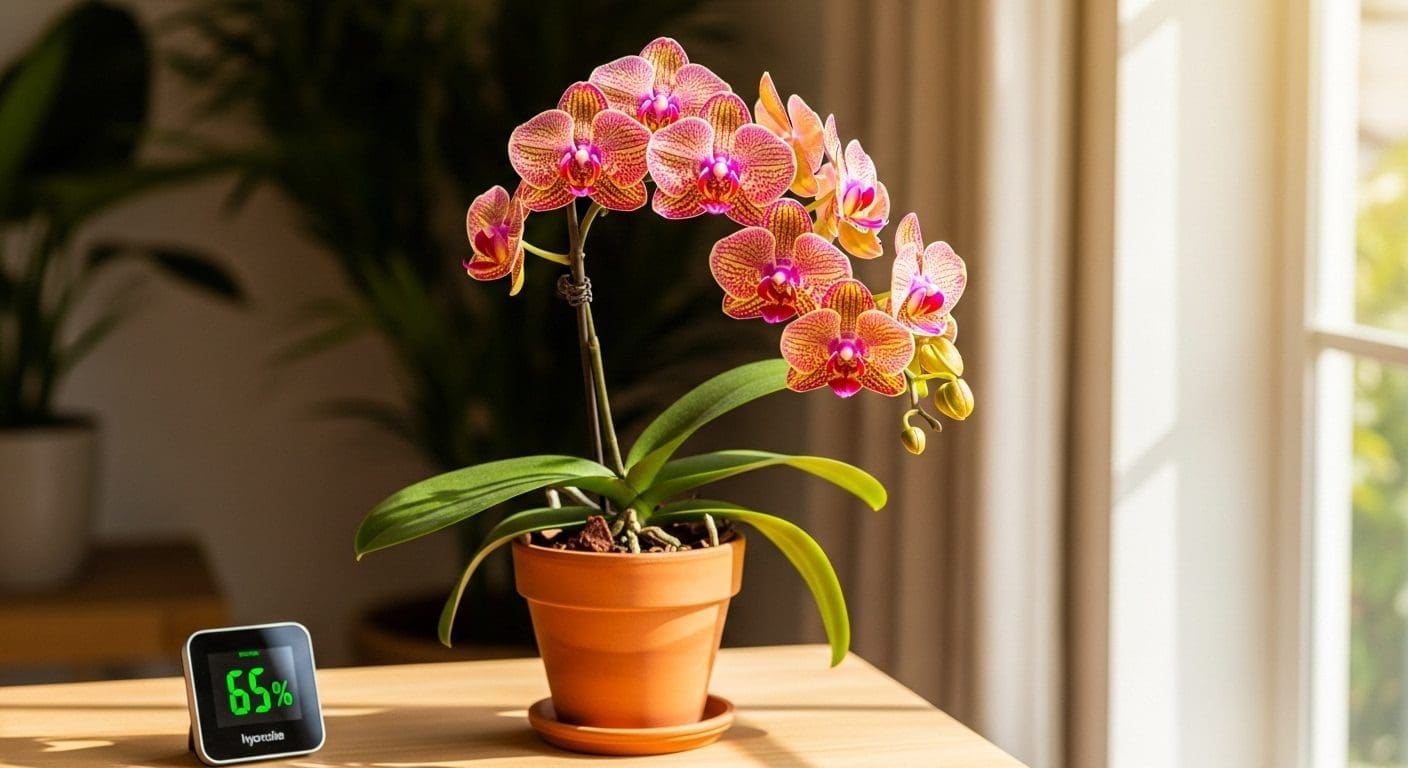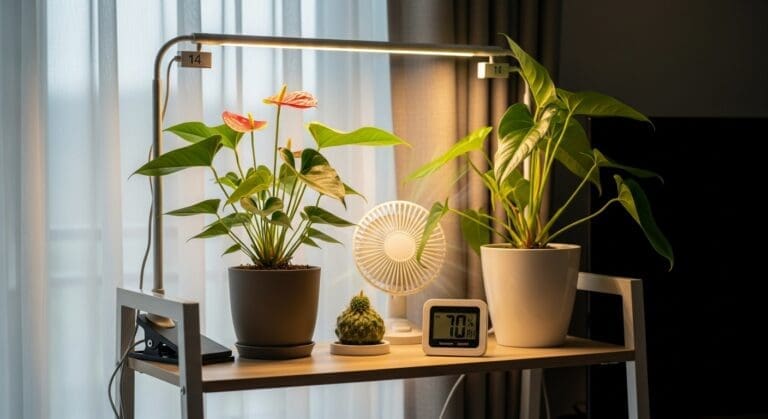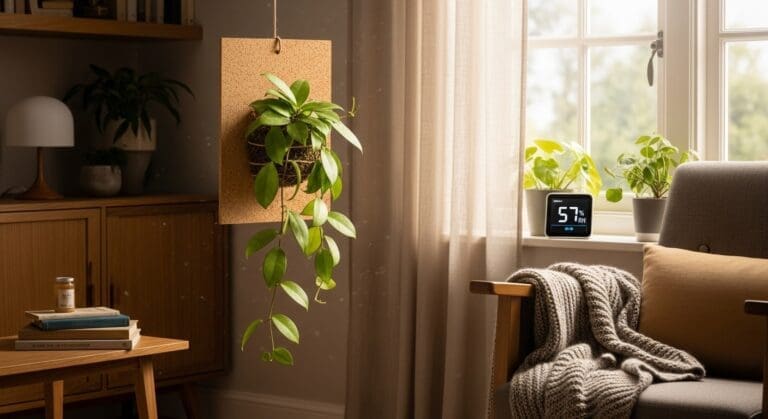Tropical orchids are among the most breathtaking plants you can grow indoors, but they’re also among the most particular when it comes to their living environment. If you’ve ever wondered why your orchid’s blooms fade too soon or its leaves start to wrinkle, there’s a good chance the answer lies in two crucial factors: humidity and temperature.
Getting these just right can mean the difference between a thriving, flower-filled plant and one that struggles year after year. The good news? Once you understand their needs, maintaining the perfect balance is easier than you think.
Why Humidity and Temperature Matter So Much
Unlike many common houseplants, tropical orchids have evolved in warm, moisture-rich environments like rainforest canopies. These conditions are steady and predictable — a far cry from the fluctuating temperatures and dry air of most homes in temperate climates.
The key is to mimic their native habitat as closely as possible. This doesn’t mean turning your living room into a greenhouse, but it does require awareness of your home’s seasonal changes.
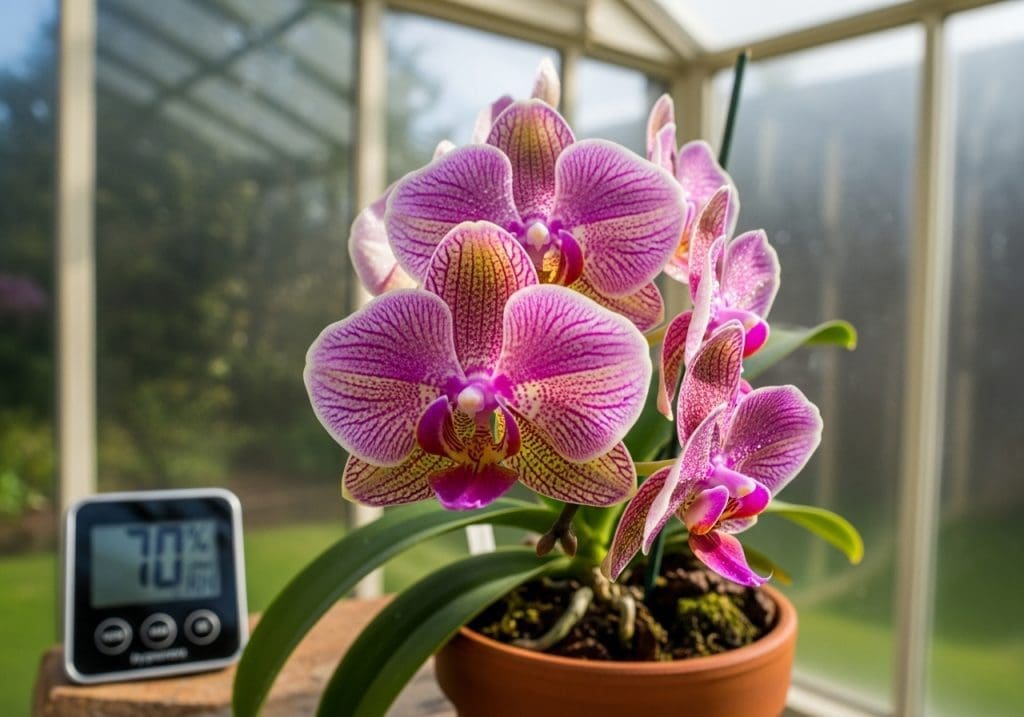
Ideal Humidity Levels for Tropical Orchids
Most tropical orchids grow best when leaf-level humidity stays around 60–70% with gentle, continuous airflow. Keep the room-average humidity lower for household safety — ideally below ~60% RH (EPA) and under 65% in occupied spaces (ASHRAE). Species and setups vary, but Oncidium culture from the RHS suggests ~55–75% RH and never below ~40% as a practical guide.
| Target | Number | How to check |
|---|---|---|
| Leaf-level RH | 60–70% | Hygrometer at leaf height |
| Room-average RH | < 60% (EPA), < 65% (ASHRAE) | Wall/room hygrometer |
| Airflow | Gentle, continuous | “Ribbon” test = lazy flutter |
Sources: EPA; ASHRAE; RHS Oncidium note on RH <65% in occupied spaces.
If humidity drops below 40%, you may notice:
- Wrinkled leaves
- Dry, crispy roots
- Buds falling off before opening
On the other hand, humidity above 80% without proper airflow can lead to fungal issues. “It’s not just about adding moisture — it’s about maintaining a healthy balance that allows orchids to breathe.”
How to Maintain the Right Humidity
There are several practical ways to keep your orchids comfortable indoors:
- Humidifiers – A small, quiet humidifier placed near your orchid collection can make a dramatic difference.
- Pebble Trays – Placing pots on trays filled with water and pebbles creates localized humidity as the water evaporates.
- Grouping Plants – Orchids release moisture into the air; clustering them together increases humidity naturally.
Create a leaf-level micro-zone (60–70% RH) but keep the room average safer for people (<~60% RH). Use short humidifier cycles plus constant airflow; ventilate if you see condensation.
“I used to think my living room air was fine until I bought a hygrometer. I was shocked to see it at 28% in winter!”
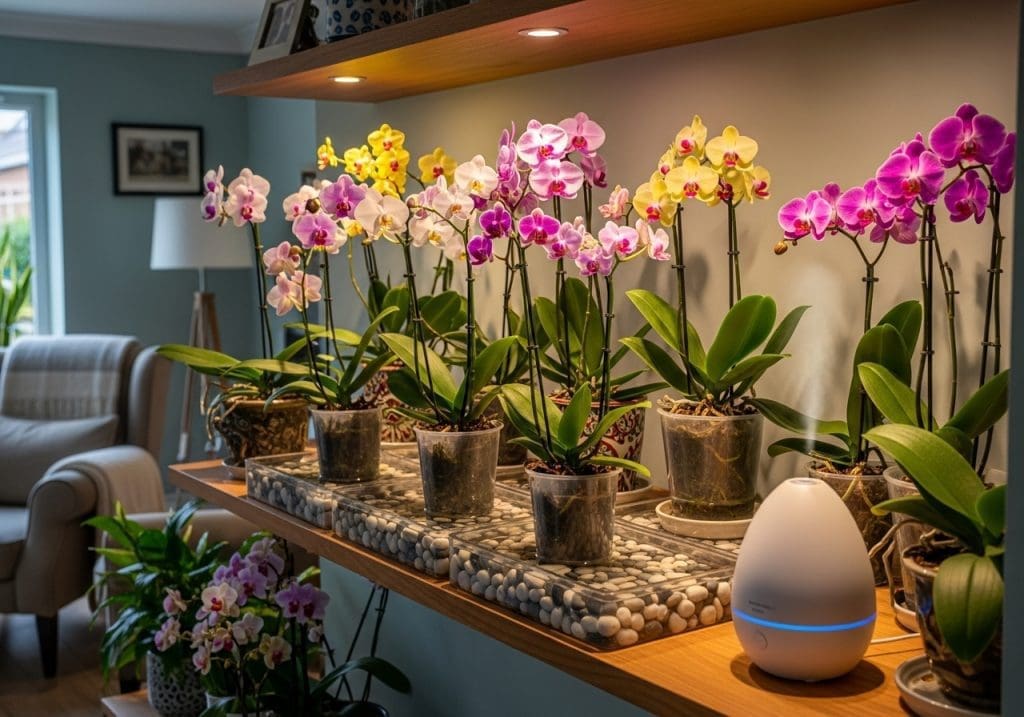
Understanding Temperature Preferences
When it comes to tropical orchid humidity temperature needs, temperature plays just as critical a role. Orchids are typically classified into three categories based on their preferred night-time temperatures:
- Warm-growing: 60–65°F (16–18°C) nights (days commonly 75–85°F / 24–29°C).
- Intermediate-growing: 55–60°F (13–16°C) nights.
- Cool-growing: 50–55°F (10–13°C) nights.
| Group (night) | Typical genera (examples) | Notes |
|---|---|---|
| Warm (60–65°F / 16–18°C) | Phalaenopsis, Vanda, Dendrobium (phalaenopsis-type) | Day often ~75–85°F; steady airflow |
| Intermediate (55–60°F / 13–16°C) | Cattleya (many), Oncidium (many) | Check hybrid notes; ranges vary |
| Cool (50–55°F / 10–13°C) | Masdevallia, Miltoniopsis, Cymbidium* | *Many Cymbidiums = cool/intermediate |
Most tropical orchids sold in garden centers — such as Phalaenopsis — fall into the warm-growing category, meaning they’re happiest in typical indoor conditions.
However, even warm-growing species need a slight night-time temperature drop (around 5–10°F / 2–5°C) to trigger blooming.
A slight night-time drop helps many orchids initiate spikes. For example, AOS notes that Phalaenopsis can set spikes with night temperatures down to ~55°F (13°C) for several weeks in autumn, while keeping days warm and bright.
Avoiding Temperature Fluctuations
In both the US and UK, seasonal heating and cooling can cause drastic indoor temperature swings. A few tips:
- Keep orchids away from radiators, heaters, and air vents
- Avoid placing them directly on cold windowsills in winter
- Use sheer curtains to filter intense summer sunlight without overheating the plant
Avoid very warm regimes like ~90/80°F (32/27°C) for extended periods — high days and high nights can inhibit Phalaenopsis flowering even with a 10°F differential.
“I once moved my orchid closer to the radiator in January… and it dropped every single bud within a week.”
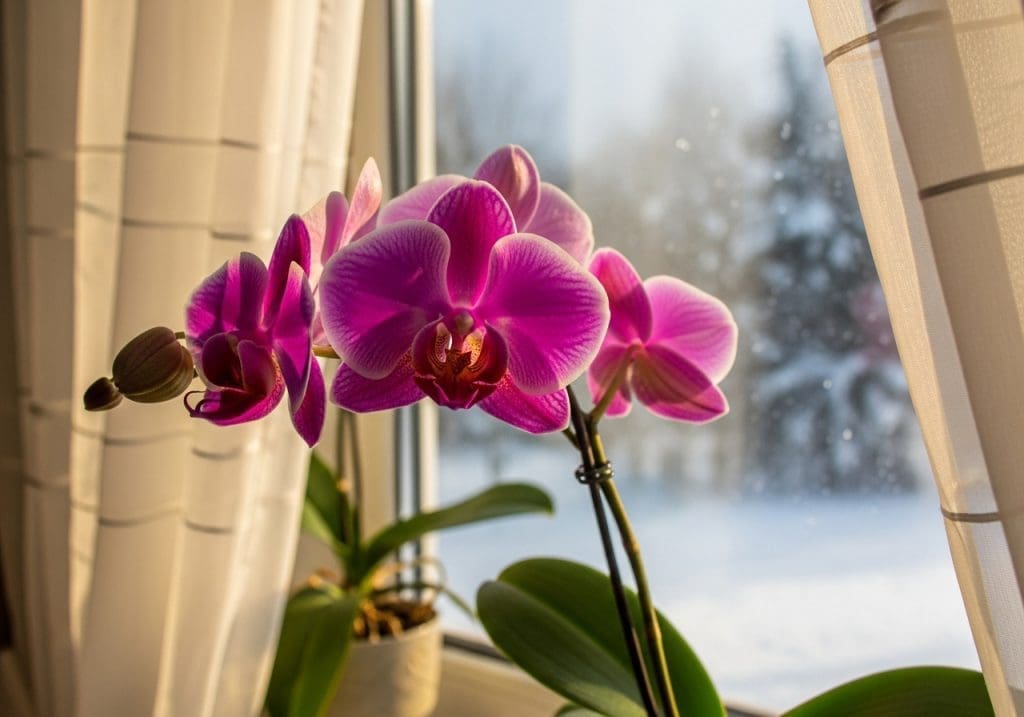
Seasonal Adjustments
In summer, natural humidity in many parts of the US and UK is higher, making orchid care easier. Winter, however, is when most orchid owners face challenges due to central heating drying the air.
Winter care checklist:
- Run a humidifier daily, especially in heated rooms
- Keep plants slightly away from windows to avoid cold drafts
- Maintain gentle air movement to prevent stagnant, overly moist air
You can find more detailed seasonal care guidance in our complete indoor tropical orchid guide.
Signs Your Orchid Isn’t Happy
Even with your best efforts, orchids will let you know when something’s off:
Too dry:
- Wrinkled pseudobulbs (storage organs)
- Dull, leathery leaves
- Blooms that fade too soon
Too humid without ventilation:
- Black spots on leaves
- Mold on potting medium
- Weak, limp growth
Too hot:
- Leaf scorch
- Rapid bloom loss
Too cold:
- Yellowing leaves
- Slowed or halted growth
Expert Tip: Monitor, Don’t Guess
Investing in a digital hygrometer/thermometer combo is one of the easiest ways to avoid problems. These devices give you accurate readings so you can adjust conditions before your plant shows signs of stress.
According to the Royal Horticultural Society (RHS guide on orchid care), regular monitoring is one of the top factors in long-term orchid health.
Creating a Mini Orchid Microclimate
If you have several orchids, you can create a dedicated orchid zone in your home:
- Use shelving with built-in grow lights and a small humidifier
- Surround the area with other plants to naturally increase humidity
- Keep the setup away from drafts and direct heat sources
This approach not only creates ideal tropical orchid humidity temperature conditions but also keeps care routines consistent.
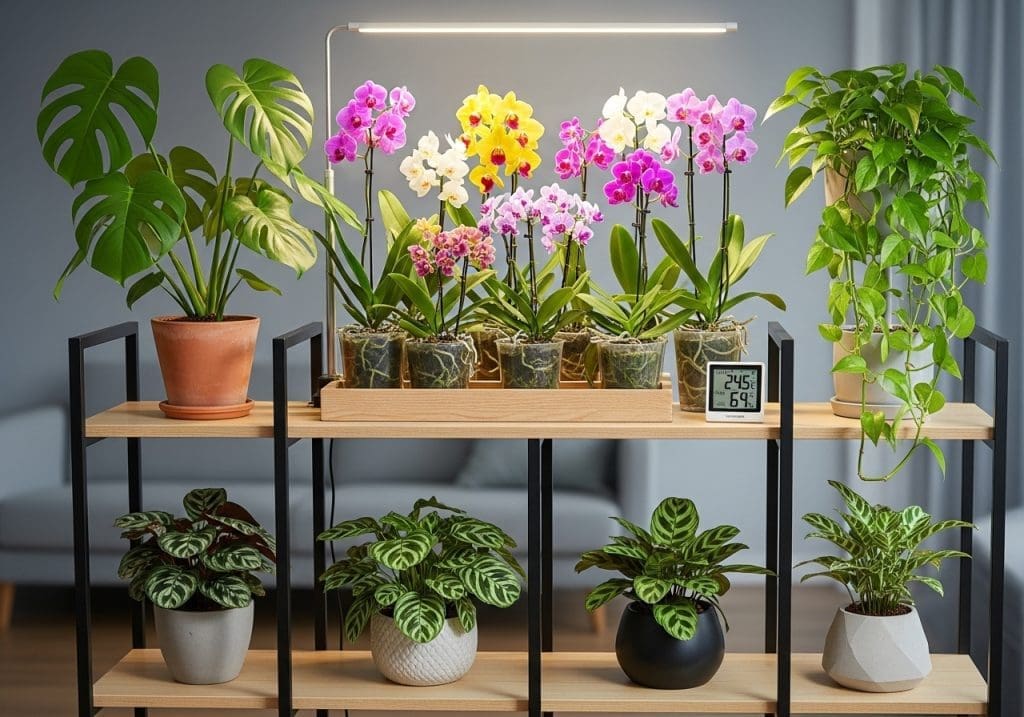
Getting humidity and temperature right isn’t just about orchid survival — it’s about helping these stunning plants truly thrive. With steady care and a little monitoring, your tropical orchids can reward you with spectacular blooms year after year.
When in doubt, remember: consistency is key. Orchids are creatures of habit, and the closer you can mimic their natural rainforest rhythms, the happier they’ll be.
Change log: Aug 2025 — Updated humidity & temperature ranges with AOS/RHS sources; added quick targets table and genera map; clarified safety notes (EPA/ASHRAE).

RarePlantCare Editorial Team produces expert content on rare plants.
Our articles are AI-assisted and human-edited before publication.
We aim to provide practical, evidence-based guides for plant lovers worldwide.
Learn more about our Editorial Policy


